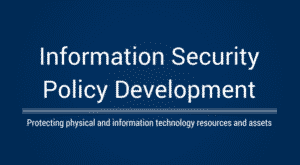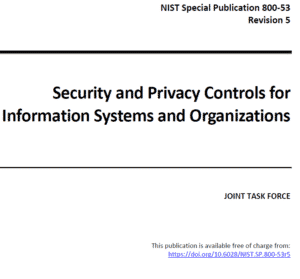
Professional Documentation Solutions: The Right Approach for Any Organization
Businesses of any size across sectors such as aerospace, medical device, pharmaceutical, financial services, and industrial areas face increasing demands for accurate, compliance-ready documentation. Some require structured content; others need traditional formats. Small and mid-size businesses struggle to afford engaging, unambiguous product manuals, user guides, installation instructions, or operational documentation that can make or break exceptional products and services.
But enterprise-grade documentation software isn’t always realistic—or necessary.
We partner with organizations to assess your specific documentation challenges—regulatory mandates, compliance gaps, customer expectations, internal team capabilities—and design solutions using tools you already own or can affordably adopt. We then create compliant, professional content using accessible platforms, provide the training and ongoing support you need, and enable your team to maintain documentation independently without permanent consulting dependency. Of course, if you would rather that we manage it, we are happy to do that.
Whether preparing for audits, meeting compliance mandates, creating technical manuals, or moving to professional documentation systems, we welcome project inquiries, RFP requests, and questions about our approach.
Contact Us About Your Documentation Project
The Real Documentation Challenge: Compliance Architecture, Not Software
In a world of hybrid work and rapid regulatory changes, most organizations use accessible, familiar tools for documentation—Microsoft Word, PDF documents, SharePoint, Google Drive. While specialized content management systems are ideal in theory, the realities of procurement constraints, budget limits, and team skillsets mean most organizations must work with what they already own. We work with whatever content management system you own or want to use.
Here’s the critical distinction: Industry standards specify what must be documented—not what software to use. Boeing doesn’t mandate proprietary tools. The FDA doesn’t require specific authoring platforms. 21 CFR Part 211 (pharmaceutical) doesn’t prescribe software. GLBA (financial services) doesn’t demand particular systems.
Compliance comes from documented content and demonstrated process—not from the tool that created the documentation. Without a unified format and process, without entering the correct information, without version control and standardization, it doesn’t matter if you use an old Underwood instead of a computer: the result will be the same.
This principle holds across every regulated industry:
- ATA iSpec 2200 is a documentation standard, not a software mandate
- S1000D defines data structure—compliant output can originate from Word
- AS9100D certification is awarded to companies using Word-based templates
- FDA IFU requirements focus on content; medical device manufacturers author in Word and submit PDFs
- 21 CFR Part 211 requires procedures—not specific authoring software
- GLBA, SOX, BSA/AML require documented compliance—not particular platforms
What is a Content Management System? The Real Definition
Content Management System doesn’t mean enterprise CCMS platforms costing $15,000+ annually. A CMS is any organized, sustainable approach to creating, storing, updating, and delivering documentation.
It could be:
-
Word templates with SharePoint storage and version control procedures
-
PDF-based documentation maintained with clear change control
-
Affordable platforms (Bit.ai, Document360, OpenDocMan)
-
Structured XML/DITA systems for complex multi-product environments
-
Hybrid approaches combining accessible tools with modular content strategies
The right CMS depends on complexity, compliance requirements, budget, and team capabilities—not on company size.
Three Service Approaches: Choose What Fits Your Needs
Foundation Documentation
Professional, compliant documentation using accessible tools. For organizations seeking:
- Professional documentation delivered in Word and PDF formats
- Built-in compliance architecture (aerospace, medical, pharma, industrial, financial services standards)
- Clear, sustainable maintenance procedures
- 12 months of included updates ensuring compliance stays current
- Options for ongoing support or internal maintenance with our templates and guidance
Capabilities include:
- Custom templates with compliance elements built-in
- Documented procedures for staff maintaining documentation independently
- Professional creation by industry compliance experts
- Version control and change management integration
- Training materials for your team
Need professional documentation without expensive software? We create compliant procedures using Microsoft Word—tools you already own. 12 months of updates included. Let’s discuss how we can help you achieve compliance confidence affordably.
Contact Us About Your Documentation Project
Scalable Platform Documentation Solutions
Professional documentation with flexible platform options matching your infrastructure. For organizations seeking:
- Platform flexibility based on budget and workflow (SharePoint optimization, affordable tools like Document360 or Bit.ai, open-source solutions like OpenDocMan)
- Documentation designed to scale across departments or product families
- Choices in ongoing support: full maintenance, hybrid (your team + our support), or independence after training
- Professional documentation created by compliance experts
- Comprehensive implementation, training, and handoff
Capabilities include:
- Multi-platform expertise (Word/PDF, SharePoint, affordable SaaS, open-source)
- Platform setup and configuration to your specifications
- Modular content approaches enabling reuse across documents
- Enterprise-wide templates ensuring consistency while allowing customization
- Comprehensive training for your teamFlexible support models based on your preference
Comprehensive Enterprise Documentation Solution
Complete documentation systems scaling across divisions, product lines, and regulatory domains. For organizations seeking:
- Documentation architecture spanning multiple divisions, facilities, or product portfolios
- Consistency across departments while maintaining efficient updates
- Advanced content management strategies (structured authoring, single-source publishing, modular content)
- Flexible ongoing support from consulting partnership to enabling full internal independence
- Compliance expertise across complex regulatory frameworks
Capabilities include:
- Enterprise-wide architecture and strategy development
- Compliance integration across multiple regulatory domains
- Scalable template systems for cross-organizational consistency
- Advanced content management and reuse strategies
- Knowledge transfer and training enabling internal documentation excellence
- Flexible engagement models: full maintenance, hybrid support, or independence enablement
- Quarterly compliance reviews and regulatory update integration
Industry Examples: Our Successful Approaches
Aerospace: Boeing Supplier Documentation
The Challenge:
When Boeing’s 737 MAX door plug blew out of Alaska Airlines Flight 1282 in January 2024, it revealed critical documentation gaps throughout the supplier network. Boeing’s response was comprehensive: suppliers must implement “mistake-proof” work instructions, document torque specifications, maintain tool calibration records, and establish rigorous traceability.
Here’s what often goes unnoticed: Boeing didn’t mandate expensive software. Boeing mandated compliance with industry standards.
How One Supplier Succeeded:
Precision Aerospace Components (PAC), a mid-sized supplier of precision parts for Boeing, faced Boeing’s requirements with a practical constraint—they needed compliant documentation without enterprise software budgets.
What They Implemented:
- Work Instructions using Microsoft Word templates with required sections (Objective, Tools/Materials, Safety, Procedures, Verification), embedded torque specifications, calibration confirmation, and mistake-proofing checkpoints
- Quality Record Forms tracking parts, materials, processes, inspections, torque applications, and tool calibration
- Documented Maintenance Procedures enabling staff to update instructions while maintaining compliance
Why This Met Boeing’s Requirements:
✅ Clear, mistake-proof work instructions documented
✅ Torque specifications explicitly defined
✅ Tool calibration records maintained with national standards traceability
✅ Complete traceability demonstrated for all parts and processes
✅ Version control and change management procedures documented
✅ Audit-ready compliance achieved
Critical Finding: Boeing auditors verified CONTENT compliance and PROCESS adherence. They did not evaluate which software tool created the documents.
Results:
- Zero quality escapes (18 months; previously 3-4 annually)
- 40% reduction in rework and scrap rates
- Zero major findings in FAA and Boeing audits
- 25% reduction in new employee training time
- Business expansion with Boeing
Learn from the Boeing case study: Professional, compliant documentation doesn’t require expensive software. We create systems meeting the most stringent requirements using accessible tools. Ready to discuss your compliance challenges?
Contact Us About Your Documentation Project
Device Manufacturing: FDA-Compliant Instructions for Use
The Challenge:
Medical device manufacturers receive FDA rejection notices for Instructions for Use (IFU) due to: unclear language, incomplete information, inadequate testing data documentation, non-compliance with plain language requirements, poor formatting, or mismatch between labeling and intended product use.
The solution isn’t expensive software—it’s compliance architecture.
How Manufacturers Succeed:
- FDA-Compliant Structure with required sections (device description, setup, operation, maintenance, warnings, contraindications)
- Plain Language Design ensuring patient comprehension and FDA acceptance
- Complete Traceability documenting all testing data, risk management, and design rationale
- Version Control supporting FDA submissions and post-market updates
- Professional Review by compliance experts catching gaps before FDA review
Why This Works:
✅ Content compliance verified
✅ Formatting and language standards met
✅ Testing data and risk information complete
✅ Design rationale documented
✅ Intended use clarity established
Key Insight: Manufacturers routinely author IFUs in Word and submit PDFs to the FDA. The platform doesn’t matter; compliance architecture does.
Results:
- FDA approval on first submission
- Faster time-to-market
- Reduced post-market update burden
- Confidence in compliance
-
Financial Services: Regulatory Documentation and Client Records
The Challenge:
Financial institutions navigate complex, overlapping regulations: SEC Rule 204-2 (books and records), GLBA (data privacy), SOX (financial reporting controls), BSA/AML (customer due diligence), FINRA rules (broker conduct), PCI DSS (payment security). Missing documentation can result in regulatory fines, reputational damage, and operational disruption.
How Financial Firms Succeed:
- Client Documentation capturing identifying information, financial profiles, investment objectives, and suitability analysis
- Advisory Records documenting investment recommendations, trade confirmations, performance reporting, and fee justification
- Compliance Procedures addressing CIP (Customer Identification Programs), suspicious activity monitoring, and transaction record retention
- Control Documentation demonstrating SOX compliance and internal control effectiveness
- Data Security Records supporting GLBA safeguarding and GDPR compliance
Why This Works:
✅ SEC registration and examination requirements satisfied
✅ Client suitability documentation complete
✅ AML/KYC procedures demonstrated
✅ Financial reporting controls documented
✅ Data protection measures verified
Key Insight: Regulatory bodies audit content and processes. Software choice is irrelevant to compliance.
Results:
- Successful regulatory examinations
- Reduced compliance risk
- Faster audit response
- Confidence in regulatory standing
Industrial Manufacturing: Operation and Maintenance Manuals
The Challenge:
Industrial equipment manufacturers create O&M manuals for complex machinery serving multiple industries. Documentation must balance technical accuracy with field usability, include safety protocols, maintenance schedules, and troubleshooting guides.
How Manufacturers Succeed:
- Technical Specification Documentation defining equipment parameters, capabilities, and performance standards
- Operational Procedures with safety warnings, step-by-step guidance, and error prevention
- Maintenance Schedules with parts lists, calibration requirements, and preventive procedures
- Troubleshooting Guides enabling field technicians to diagnose and resolve issues
- Training Materials supporting operator certification and competency
Why This Works:
✅ Technical accuracy verified by engineers
✅ Safety documentation comprehensive
✅ Field usability validated with technicians
✅ Maintenance procedures clear and complete
✅ Training effectiveness measured
Key Insight: Customers need usable, accurate manuals—not proprietary file formats. Word and PDF work perfectly.
Results:
- Reduced field support costs
- Faster operator training
- Fewer equipment-related incidents
- Improved customer satisfaction
Ready to create documentation tailored to your situation? Contact us to discuss your project, request a proposal, or ask questions about how we approach technical manuals as well as regulatory and compliance documentation.





